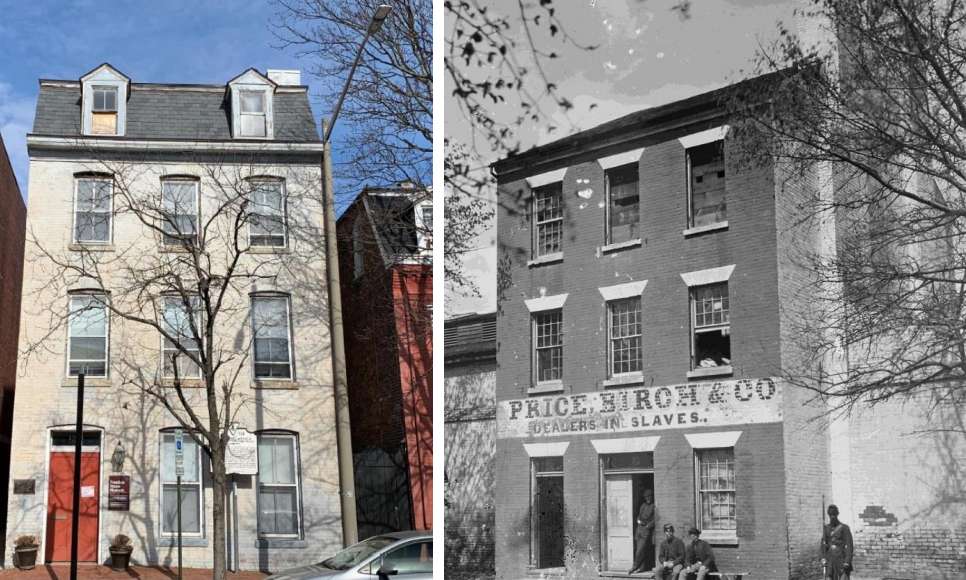
While the Office of Historic Alexandria (OHA) is going into excruciating detail to restore the Freedom House museum‘s exterior to its pre-Civil War appearance, city leaders are unsure if a sign advertising the sale of slaves might take that too far.
Today, the Freedom House Museum is a city-owned museum dedicated to telling the stories of the Black men, women and children trafficked through the building between 1828 and 1861.
In a meeting at the Board of Architectural Review (BAR) yesterday (Wednesday), Gretchen Bulova, director of the OHA, and City Architect Al Cox discussed the extensive research and work going into making the exterior of the building look as it did at its period of cultural significance: when it was the headquarters of the largest slave-trading operation in the United States.
“This is a little bit different than the board normally sees,” Cox said. “National practice says elements that have been on a building for more than 50 years begin to achieve historic importance in their own right. In this case, rather than the architecture being what’s most important, it’s of cultural significance to the city and the country.”
Cox said there are other examples, notably at James Madison’s Montpelier and Thomas Jefferson’s Poplar Forest, where later additions were removed to restore the original home to its era of historic relevance.
OHA plans include things like bricking up windows added later and removing siding from the building. However, one item of historical accuracy might not be appropriate for the building: a sign that says “Price, Birch & Co, Dealers in Slaves.”
The BAR supported OHA’s plans to the building but said they were less certain about the sign. The sign text would be determined in a separate Certificate of Appropriateness application process.
“I’ve been looking at the pictures of the sign that was there,” said BAR member Andrew Scott. “I’m not asking for it but, if you could paint a mural of the faces of some of the enslaved people rather than repainting the names of the owners of the building, it might be more appropriate and better signal what this building is about.”
Bulova said the OHA also hasn’t been able to find images of the sign from when it was the Franklin and Armfield Office.
“We completely agree,” said Bulova. “We need to do more research.”
BAR Chair James Spencer said the sign gave him pause, but like the rest of the BAR, he supported the extensive work the OHA was doing to restore the building.
“I flipped through the photos a bunch of times and said ‘This is really good stuff,'” Spencer said. “The sign part freaked me out a little bit but you guys have clarified that, because I think we need to have a broader community discussion about the sign.”

An annual holiday program kicking off next month at the Fort Ward Museum (4301 W. Braddock Road) will combine the fun and holiday spirit of the Christmas season with education about a conflict that left an estimated 1.5 million casualties.
Civil War Christmas in Camp is a popular annual program the Fort Ward Museum, featuring reenactors in a winter camp setting and period decorations. This year, the program is scheduled for Sunday, Dec. 9, from noon to 4 p.m.
The suggested donation for visitors is $2 per person or $5 for families.
According to a release from the city:
The program features a Civil War-era Union Santa Claus, based on an 1863 cover of Harper’s Weekly by artist Thomas Nast, who will interact with the public, welcome children to the reconstructed Officers’ Hut, and visit soldiers in camp. Reenactors will interpret army life in winter camps that are decorated for the season, and celebrate by opening Christmas boxes from home, singing carols of the period around the campfire, and preparing holiday meals. The Museum will be decorated with festive greenery and a Victorian parlor tree. Children can make a holiday card or ornament. A variety of Civil War books and “stocking stuffers” are available in the Museum shop.

The Lyceum (201 S. Washington Street) in Old Town will host a free magic show next month.
The show, put on by magicians from Ring 50, will also include a toy drive to benefit the Fund for Alexandria’s Children Holiday Sharing Program, which gets presents for children who might otherwise not get gifts during the holidays.
The magic show also reflects part of the museum’s history, with records showing 19th-century magicians performing at the venue in the 1840s.
According to the city’s website:
Magic is a part of The Lyceum’s history and 19th-century magicians like Signor Blitz and Wyman the Wizard performed at there in the 1840s. This modern family-friendly show will be geared toward children ages 5 to 12, but all are welcome. Attendees are encouraged to bring new, unwrapped toys to donate to the Fund for Alexandria’s Child Holiday Sharing Program, which benefits kids who might otherwise go without holiday gifts this year. For more information, email [email protected]. The show is free, but space is limited so please reserve a space here!
Photo via Fengyou Wan/Unsplash
Freedom House Museum in Old Town is looking to replicate how its property looked in the mid-19th century, when it was the headquarters of the largest slave-trading operation in the United States.
The proposed project at 1315 Duke Street would restore portions of the museum building exterior to how it looked between 1828 and 1861. After being deferred over the summer, it goes back to the city’s Board of Architectural Review next Wednesday, Nov. 15.
The building was the headquarters for five successive slave dealing firms between 1828 and 1861, including Franklin and Armfield, one of the largest domestic slave trading firms in the country. The building was a slave trafficking hub that forcibly shipped thousands of Black men, women and children around the country.
Alexandria bought the building in 2020 for $1.8 million from the Northern Virginia Urban League. In 2018, the city started running the museum and gave NVUL a $63,000 interest-free loan for upgrades, following concerns that the building was falling into disrepair.
After buying the property, the Office of Historic Alexandria shifted the focus inside the three-story building on the lives of the people enslaved instead of the enslavers. It fully reopened to the public with temporary exhibits in May 2022.
According to the Office of Historic Alexandria, the work involves:
- Repointing masonry walls
- Masonry infill of window openings added after the period of significance
- Removal/replacement or restoration of doors, windows & shutters
- Repainting all previously painted walls
- Revealing and restoring the historic sign
- Siding replacement
- Demolition of the south slope of the existing mansard roof and portions of the east and west gable ends for restoration of the original side-gable form slate roof
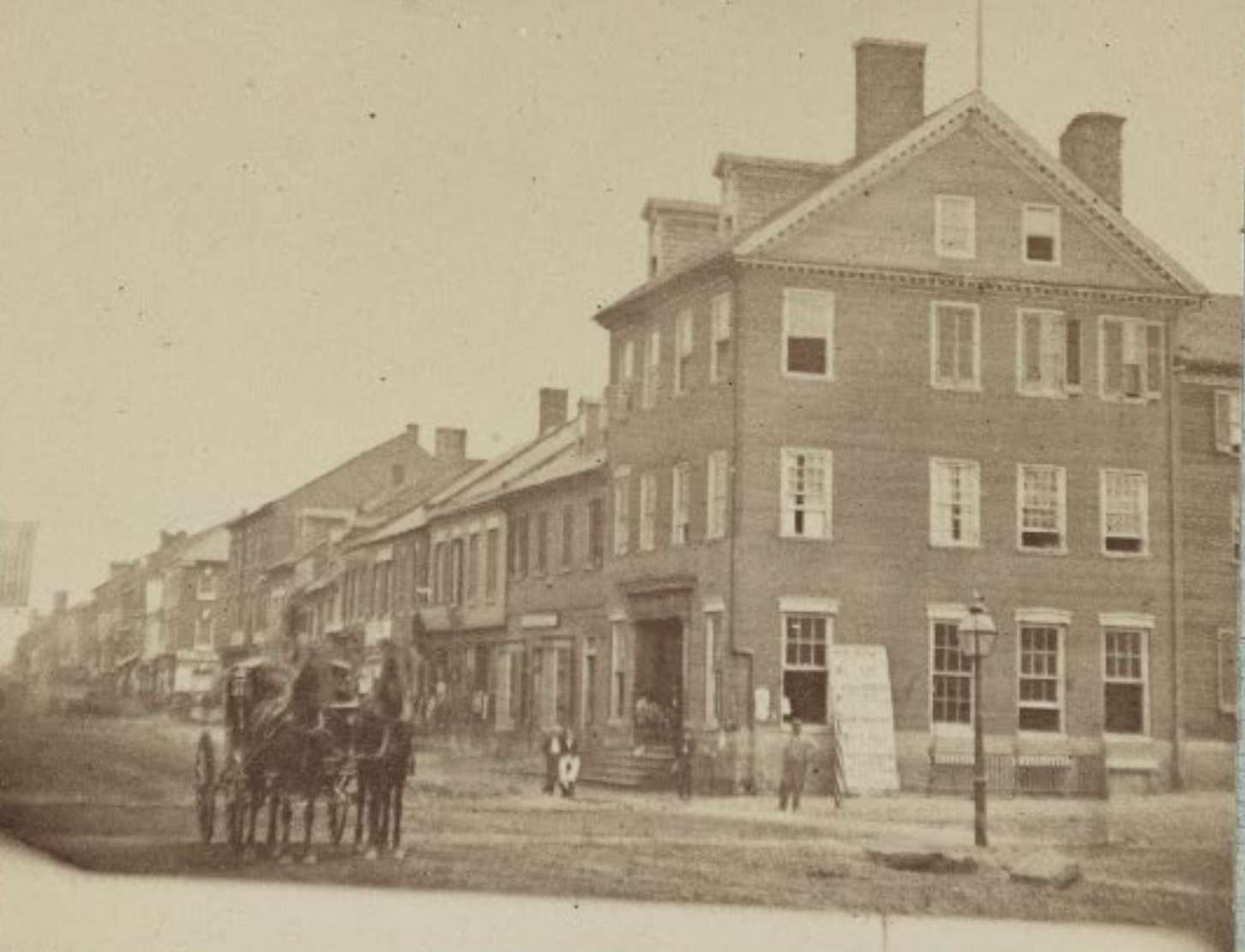
While the city is making strides to honor the victims of two Alexandria lynchings, a member of the Alexandria Community Remembrance Project noted in a recent meeting that a third victim — the first recorded in the city — has been neglected in part due to a technicality.
Thanks in large part to the Equal Justice Initiative (EJI), a non-profit based out of Alabama working to commemorate victims of lynching, the city has started to do more work to commemorate the victims of lynchings in 1897 and 1899. In particular, however, the EJI focuses on lynchings between 1877 and 1950, while Alexandria’s first recorded lynching occurred over ten years before that period started.
“I think we should have a historic OHA marker for John Anderson, who was killed by a mob of white men on Christmas Day in 1865 at West and King Street,” said Tiffany Pache of the Alexandria Community Remembrance Project. “I think we should start talking about him as our first documented lynching.”
One of the goals of the Alexandria Community Remembrance Project was to dig through archives and see if other lynchings in the city’s history might not have been as noted as the deaths of Joseph McCoy in 1897 and Benjamin Thomas in 1899. A newsletter from the project in December 2021 compiled accounts from various news organizations about the murder of John Anderson on Christmas Day in 1865.
A group of white men, just after the end of the Civil War, undertook a campaign of violence across the city, attacking several Black residents and causing serious injuries. John Anderson, a Black man who resided near King Street, left his Christmas dinner to try and put an end to the violence after he heard a Black soldier had been beaten. However, after approaching the mob, Anderson was beaten and fatally shot.
According to the project’s newsletter:
Anderson crossed the street diagonally toward John Mankin, who stood on Gregg’s corner in a dark coat and slouch hat. Anderson did not speak again. As he stepped over the curbstone, Mankin attempted to strike him, but Anderson deftly blocked the punch. As Anderson readied for a fist fight, Mankin beckoned a crowd of whites. He pulled something out of his pocket. Extending his arm, he revealed a gun and shot Anderson in the thigh.
Anderson turned. Suddenly, John’s brother Oscar Mankin was there, at the forefront of a gang of white men. He shot Anderson in the head. Anderson took a few steps and fell to the ground, where he was pelted with stones and bricks thrown by the mob. Huntington and John L. Heck were there, as was George Javins, according to witnesses. John Anderson died five days later from a gunshot wound to the left side of his skull.
Pache said while the murder is outside of the dates covered by the EJI, it still merits some recognition from the city.
While the newsletter extensively covers the story of the murder and the aftermath, Pache said there are also likely court records from the incident that the city hasn’t accessed.
“The current research is based on newspaper accounts, but there was also a court case that tried the men,” Pache said. “[They] were convicted and sent to Ohio, then they were released after only a few months. There was a court-martial, because the military was still here, so I want to get my hands on that.”
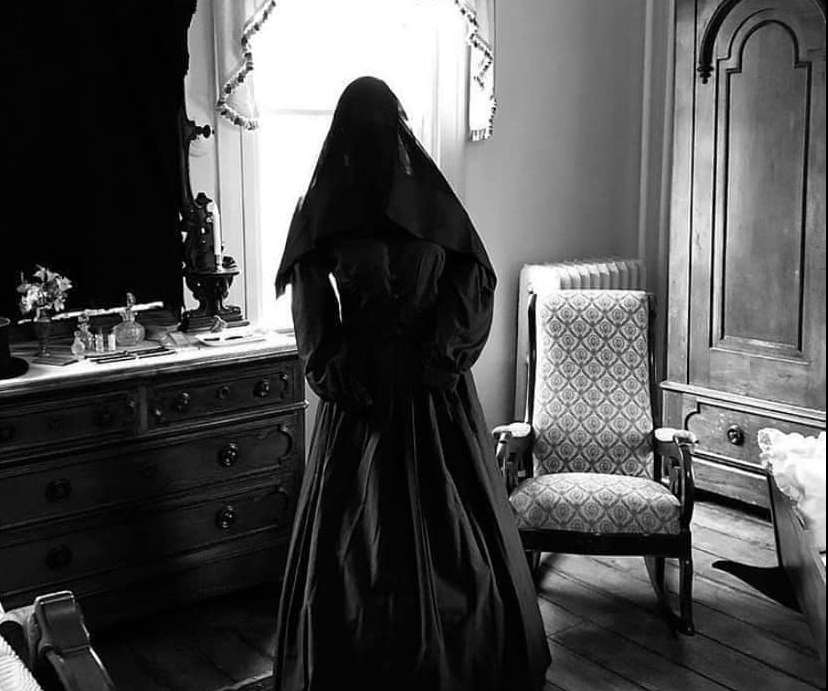
If you’ve binge-watched The Fall of the House of Usher and are in the mood for some Edgar Allan Poe readings, the good news is an acclaimed Poe reenactor is making his annual return to Old Town for a reading on Halloween.
The bad news: it’s sold out. But there are still plenty of other options to get your spooky fix in Alexandria on Halloween.
The Lee-Fendall House Museum is hosting its Grief & Ghosts Tours on Friday, Oct. 27 and Saturday, Oct. 28 from 7-9 p.m. Tickets are $15 per person.
“Explore Victorian mourning traditions coupled with stories of tragic deaths and mysterious occurrences at the Lee-Fendall House,” the Office of Historic Alexandria (OHA) said in a newsletter. “Customs such as draping mirrors after death, funeral practices, hair jewelry and mourning clothing will be explored. These tours offer a rare opportunity to see the house after dark!”
The Carlyle House Museum and Park, meanwhile, is hosting a “mummy investigation” puzzle around the historic home on the same nights from 6-8 p.m. Tickets are also $15 per person.
“Residents of the Ancient Virginia City Refuse to believe the remains are those of either John Carlyle or General Braddock,” OHA said. “Investigation to be extended. Whose body is it? Solve a series of clues and puzzles to discover the identity of Carlyle’s Mummy. Groups of 10 will be let in the house at a time.”
The macabre tours continue post-Halloween with a Historic Cemetery Tour on Saturday, Nov. 11. The tour runs from 1-2 p.m. and starts at the intersection of Hamilton and Wilkes Streets. Tickets are $20 per person.
According to OHA:
Discover an extraordinary walking expedition through the historical Wilkes Street Cemetery Complex. Delve into the lives of remarkable individuals laid to rest here who share a profound connection to the esteemed Lee-Fendall House. This exclusive tour will lead you to gravesites not typically covered in our regular tours, where captivating tales of duels, cavalry battles, encounters with the Marquis de Lafayette, and numerous other intriguing narratives await. By participating in this unique tour, you not only immerse yourself in riveting history but also contribute to a meaningful cause. Tickets must be purchased in advance. The tour is limited to 25 participants and lasts approximately one hour.
there are also multiple bar crawls that night, from the Alexandria Bier Garden to The Light Horse Restaurant.
One of the most interesting events, though, is at the Ivy Hill Cemetery.
The cemetery is hosting “Lights Out: Glow in the Dark Halloween Party” on Saturday, Oct. 28, from 7-9:30 p.m. Tickets are $50 for general admission or $55 for admission and a tour of the cemetery.
The evening will include music, refreshments, a costume contest, games and more.
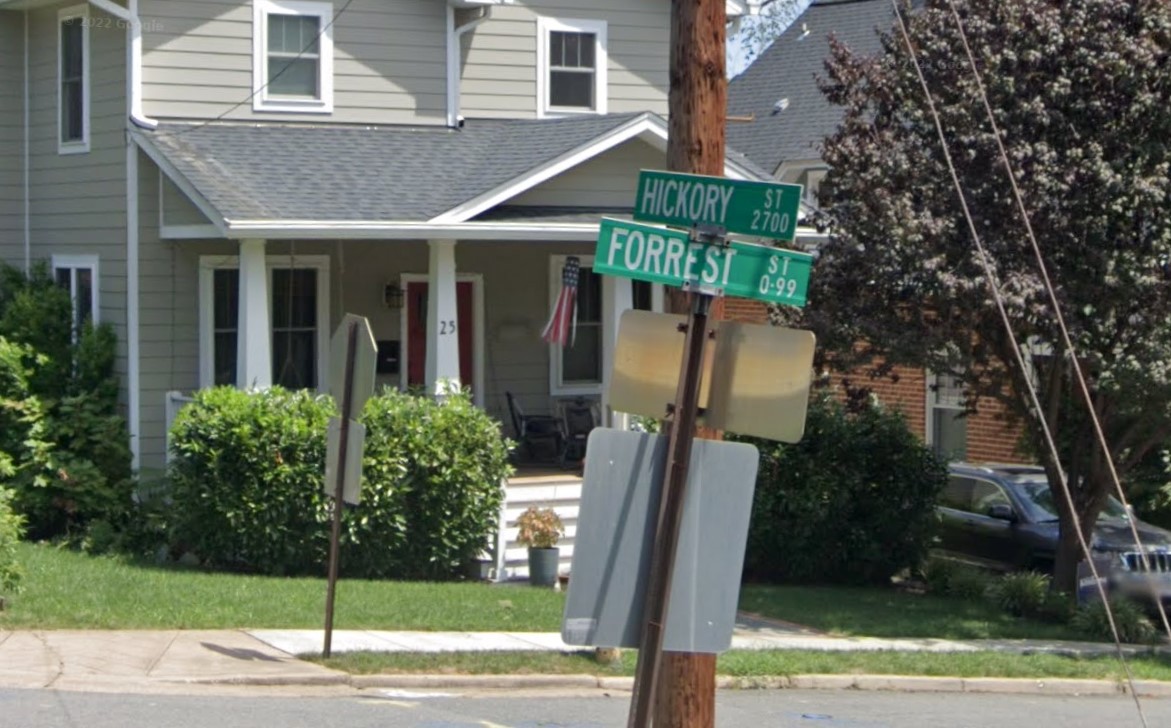
Just after the full list of potential new street names was revealed, the City of Alexandria said six public streets could be renamed as the opening of a 15-year process.
The city plans an open public hearing on Nov. 30 at 6 p.m. in Alexandria City Hall (301 King Street) to discuss the proposed names or potential alternatives.
According to a release from the City of Alexandria, the street names changes being considered are:
- North Breckinridge Place: changed to honor Benjamin Banneker
- North Frost Street: changed to honor Sarah Gray
- North and South Early Street: changed to honor Harriet Jacobs and Ona Judge
- North and South Jordan Street, Jordan Court: changed to honor the Hughes family
- Forrest Street: changed to Forest Street
The proposal to begin renaming streets was introduced on Jan. 10, 2023, with a plan to rename roughly three streets per year. If the new names are approved by the City Council, three of them will be changed in January 2024.
Photo via Google Maps
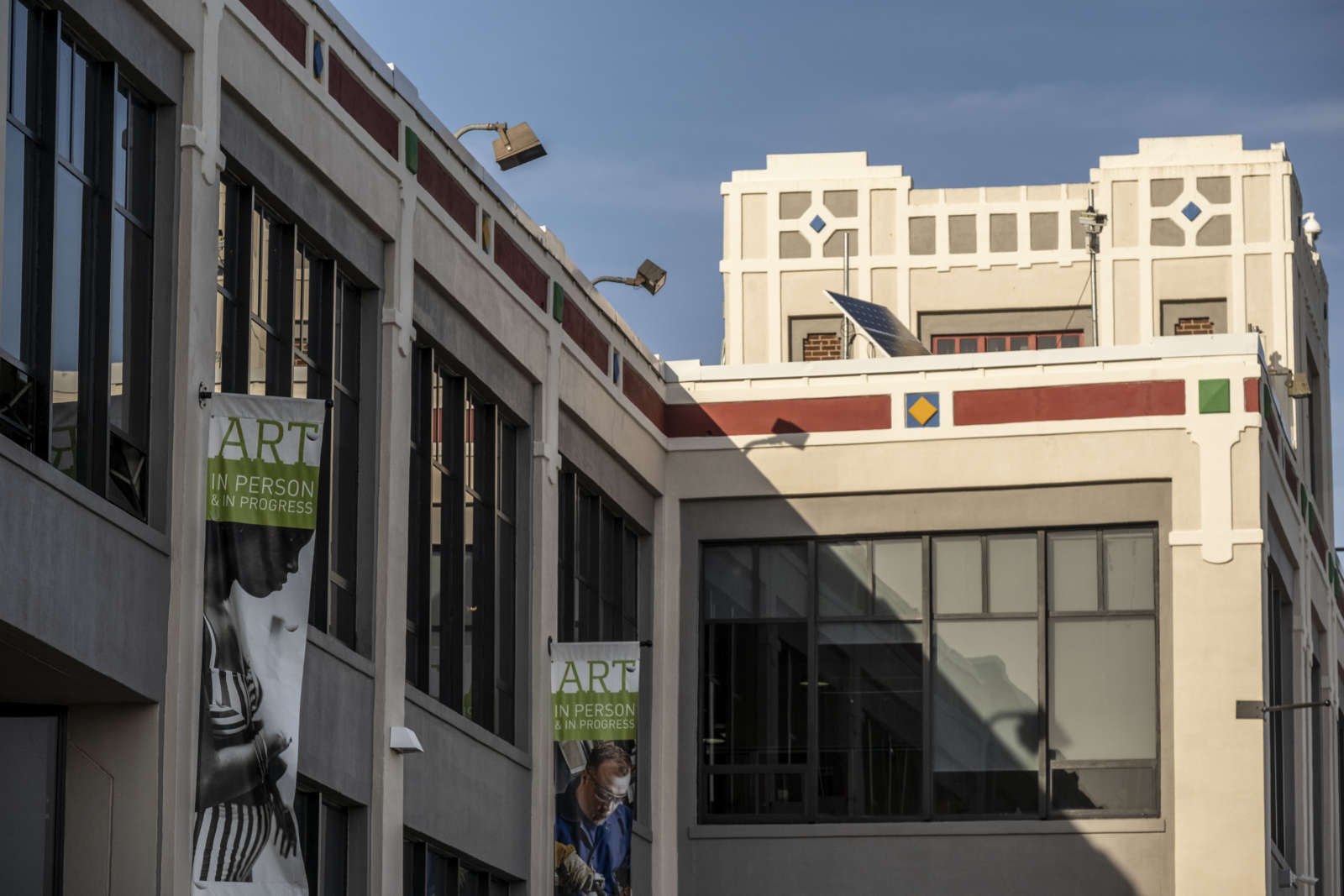
This weekend marks the 105th anniversary of the Alexandria Torpedo Factory’s ironic origins.
As told in the Office of Historic Alexandria’s This Week in Historic Alexandria newsletter, the contract for constructing the U.S. Naval Torpedo Station was awarded on Oct. 14, 1918. The United States was embroiled in the First World War, but work on the building wouldn’t begin until the day after the war ended.
“Ironically, work on the building began on November 12, 1918, the day after Armistice Day, which marked the official end of World War I,” the Office of Historic Alexandria wrote. “The first torpedo was produced there in November 1920. Once fully operational, the Torpedo Station was responsible for the manufacture and maintenance of torpedoes for the next five years.”
Five years after it started operations, the factory temporarily stopped producing torpedos and became a storage facility until WWII, when production resumed at an intense rate. The Torpedo Factory website said the complex grew to 16 buildings and 5,000 employees, who were notably not segregated, which the website said was uncommon in Virginia at the time.
After the war, the Torpedo Factory briefly manufactured parts for rocket engines before shutting down permanently in 1946. In the 1950s it was used as the Federal Records Center and stored various items, from dinosaur bones to the Nuremberg War Crimes trial records — Alexandria gets a special shoutout at the start of William L. Shirer’s The Rise and Fall of the Third Reich.
In 1974, the Alexandria City Council passed a three-year pilot to allow The Art League to set up inside the neglected building. The interior was power-washed, 40 dump trucks of debris were removed, and the Torpedo Factory Art center was born.

The City of Alexandria is working on renaming streets honoring Confederate leaders, and now there’s a full list of new potential names to replace them.
The Historic Alexandria Resources Commission compiled a list of roughly 63 names that could replace streets honoring Confederates.
Each item on the list includes a brief biography or information about the names. Some potential street names honor individuals, others honor groups of people — like Native American tribes or a group of suffragists called the Silent Sentinels. Some names represent ideas or local icons, like “Titans” in honor of the Alexandria City High School mascot and “Restoration” to represent that Alexandria was the Restored Capital of Virginia from 1863-1865.
Some of the goals set for the list included focusing on underrepresented people in Alexandria street names, such as women or minorities, and to avoid naming streets after anyone currently living.
Some of those on the list were recently deceased, including:
- Chet Avery: A blind man who advocated for people with disabilities. Avery was an Alexandria Living Legend and died in 2022
- Senator John McCain: An Alexandria resident, American politician, Presidential candidate and former prisoner of war. He died in 2018.
- Kerry Donley: a former Alexandria Mayor from 1996-2003 and Democratic Party of Virginia Chairman from 2003-2005, who died in 2022.
- Bernard Cohen: the lawyer in the Loving vs. Virginia case, who also represented Alexandria in the Virginia State Legislature. Cohen died in 2020.
- Lillie Finklea: helped establish the Friends of the Freedmen’s Cemetery in 1997 and helped lead research, public speeches and remembrances to support the cemetery. She died in 2022.
- Gary Oelze: Founder of the Birchmere Music Hall, died in 2023.
- Willard Scott: A weather forecaster on the Today Show and the creator/original performer of the Ronald McDonald mascot. He died in 2021.
- Patsy Ticer: The first woman elected Alexandria mayor in 1991. She died in 2017.
- Dorothy Evans Turner: A community organizer and activist who died in 2016.
- Frankie Welch: An Alexandria business owner and designer who designed signature scarves for four First Ladies. She died in 2021.
Several of those on the list were enslaved, including:
- Ona Judge: Escaped enslavement by the Washington family in 1796 and eluded the Washington family’s efforts to recapture her.
- Betsey Dogan: Enslaved at birth but gained her freedom before the Civil War. She and her son owned businesses and residences in an area of the city once known as Fishtown.
- Frederick Douglass: Escaped slavery and became one of the nation’s most famous social reformers and orators.
- Mary Edmonson and Emily Edmonson: enslaved sisters jailed in Alexandria and later engaged in anti-slavery activism after their freedom.
- George W. Ford: A U.S. military officer in the Spanish-American War born into slavery at the Mount Vernon plantation.
- David Jabour: Born enslaved, but purchased his freedom and worked as a potter on Wilkes Street with at least fifteen other free Black artisans.
- Harriet Jacobs: Abolitionists who established the first free school for Black children in Alexandria in 1864.
- Hercules Posey: The enslaved chief cook at Mount Vernon. Posey escaped enslavement on 1797 and fled to New York City.
The recommendations are set to go to the City Council sometime in November for review.
Photo via John McCain/Facebook
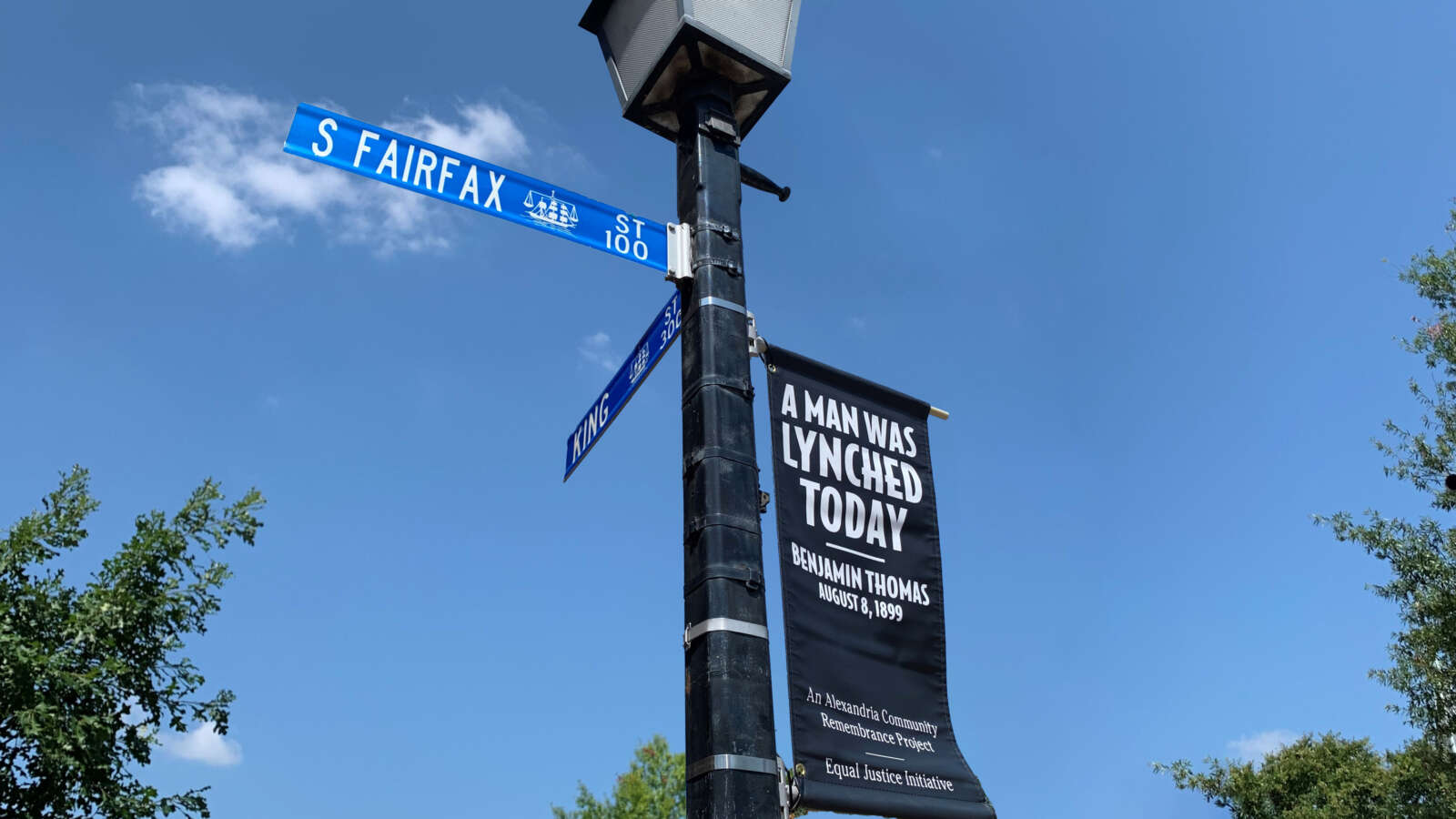
A set of dinners next month will help raise funding for local scholarships named after the victims of lynching in Alexandria.
The Alexandria Community Remembrance Project runs the scholarships in the names of Joseph McCoy and Benjamin Thomas, Black Alexandrians who were lynched in 1897 and 1899.
“The dinners, hosted in the homes of members of ACRP, provide attendees with an opportunity to meet other Alexandrians who care about racial justice issues,” the Office of Historic Alexandria said in a newsletter. “Each dinner is based on a book that attendees agree to read ahead of time and discuss at the meal.”
Tickets for the fundraisers are $125 per person. The dinners are scheduled for Saturday, Nov. 4 and the following Saturday, Nov. 11.
The discussions will center around Ijeoma Oluo’s So You Want to Talk About Race, Grace Elizabeth Hale’s Making Whiteness: The Culture of Segregation in the South, and Loki Mulholland’s Get Back to the Counter, Seven Lessons From Civil Rights Icon Joan Trumpauer Mulholland.

